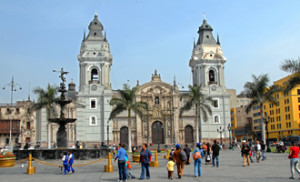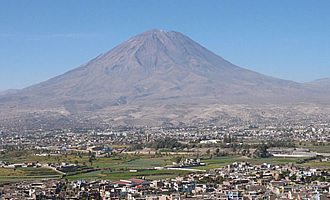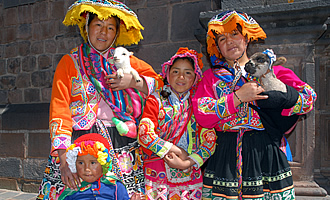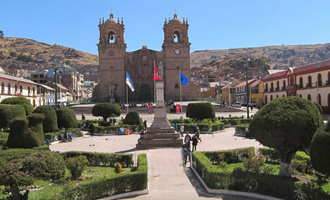DESTINATIONS FROM CUSCO

Plaza de Armas
City of Cusco
The cultural and religious center of the Inca world, Cusco was once an awesome city. The seat of the God-king, the Inca (‘Inca’ technically refers to just the monarch, often called the Sapa Inca, who was revered as a divine ruler by the people), it was a city built to reflect the might of the Empire.
Despite its brutal sacking by the Spanish conquistadors, Cusco remains an exciting and vibrant place. Today it is a large commercial center and the capital of Cusco Department as well as the undisputed archaeological capital of South America, a UNESCO World Heritage Site and one of the continent’s biggest tourist destinations. Spectacular colonial architecture stands astride monolithic ruined Inca palaces made of perfectly hewn stone, which line atmospheric, scorched cobbled plazas. White-washed alleys and terracotta-tiled roofs are home to a rich mix of history, lively nightlife and a vast array of museums, sights and scenery. The collision and fusion of indigenous Andean and imported colonial cultures is interesting and always evident, even to those tourists who only come to the city as a staging post for the most famous trek in the Americas, the Inca Trail to Machu Picchu.
. . . read more about Cusco

Arequipa
Arequipa & Colca Canyon
The historic centre of Arequipa, built in volcanic sillar rock, represents an integration of European and native building techniques and characteristics, expressed in the admirable work of colonial masters and Criollo and Indian masons. This combination of influences is illustrated by the city’s robust walls, archways and vaults, courtyards and open spaces, and the intricate Baroque decoration of its facades. Criterion i The ornamented architecture in the historic centre of Arequipa represents a masterpiece of the creative integration of European and native characteristics, crucial for the cultural expression of the entire region. Criterion iv The historic centre of Arequipa is an outstanding example of a colonial settlement, challenged by the natural conditions, the indigenous influences, the process of conquest and evangelization, as well as the spectacular nature of its setting.
Colca Canyon is not as well visited as other natural wonders of Peru, but it is home to the great condors and reportedly deeper than the Grand Canyon.
. . . read more about Arequipa & Colca Canyon

Local People
Trujillo & Chiclayo
In Trujillo, you can see the remarkable Huacas built by the Mochicas like the Huaca of the Sun and the Moon which measure more than sixty-five feet. In addition, the El Brujo complex, decorated with inspiring figures of dancers and warriors. The city also has a splendid Colonial architecture where you will want to see the Cathedral, the Archbishop’s Palace, the Church of the Company of Jesus Christ, the monastery of El Carmen, and it’s woodenbalconied colonial mansions are well-preserved and it’s people revel in their Spanish traditions of horsemanship, music and dance. The beach is famous for the caballitos de torora which are light weight boats made of totora reeds that have been used to cut throught the ocean since the time of the Mochicas and Chimus.
Chiclayo is well known for it’s archaeological sites nts treasures such as Sipan, Túcume, Bátan Grande and Huaca Rajada. The thriving marketplace commonly know as the Marcado Modelo features all kinds of shopping, from appliances and clothing to impressive array of fascinating natural medicines and herbal remedies.
. . . read more about Trujillo & Chiclayo

Plaza de Armas-Lake Titicaca
Puno & Lake Titicaca
Most travelers come to Puno as a means of getting to Lake Titicaca and seeing nearby Inca ruins. Founded in November, 1868 by the Spanish count Lermos, and once a prosperous community granted city status in 1810 due to the silver mines at Laykakota, Puno today is the capital of the altiplano region, a dusty, commercial border town across Lake Titicaca from Bolivia.
Puno, however, has a wild, exuberant side. It is officially the Folkloric Center of Peru. Throughout the year, monthly festivals with music and dance fill the streets and bring out the photographers. The most popular of these festivals is the feast of the Virgen de la Candelaria with the famous Devil Dancers. The costumes are vivid and spectacular and no expense is spared for the “10-day celebration in honor of the patron of Puno. Hundreds of dance groups from the neighboring towns pay their tribute to the mamacha, showing the best of their folklore and wearing their finest costumes. This is the time to see the famous and colorful diablada where, to the rhythm of the sikuri or panpipe players, groups of dancers dressed as devils parade worshipping their patron.
. . . read more about Puno & Lake Titicaca

Monkey in the Amazon
Manu – the Amazon
The Amazon rain forest is the largest tropical forest on Earth, covering about 2.7 million square miles (seven million square kilometers) or 90% the size of the 48 lower states of the U.S. Though the Peruvian Amazon is only 10% of this total, it represents the wildest, most wildlife-packed rain forest in the world. The density and diversity of Amazonian animal and plant species reach global maxima in the extreme western Amazon, near the foot of the Andes , precisely the location of the Manu Wilderness.
Manu is the most biologically diverse region of the Amazon for terrestrial life. it provides unforgettable opportunities for a nature and birding experience. Manu consists of the area surrounding the Manu Biosphere Reserve and extends eastward through the Manu Lowlands (Peru). The list of flora and fauna includes 1,000 species of birds, more than 200 species of mammals, 13 species of monkey, a great variety of butterflies and 15,000 species of flowering plants. Neither tourism nor tourist lodges are allowed in the park itself. In 1980 the area to the east of the park was designated as a Reserve Zone, reserved for tourist and commercial activities.
. . . read more about Manu & the Amazon

